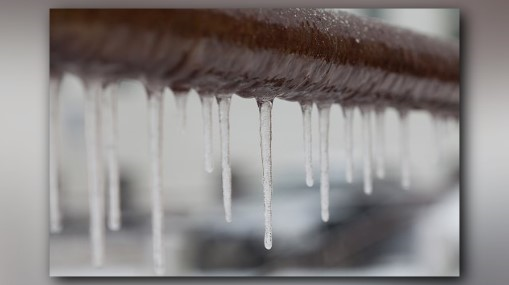Avoiding Frozen Plumbing in Winter: Expert Tips
Avoiding Frozen Plumbing in Winter: Expert Tips
Blog Article
The article following next involving Helpful Tips to Prevent Frozen Pipes this Winter is rather enlightening. You should read it.

Cold weather can wreak havoc on your plumbing, particularly by freezing pipelines. Right here's exactly how to stop it from happening and what to do if it does.
Introduction
As temperatures decline, the danger of icy pipelines boosts, potentially leading to pricey repairs and water damages. Comprehending just how to stop frozen pipes is critical for property owners in cold climates.
Avoidance Tips
Protecting susceptible pipelines
Cover pipelines in insulation sleeves or utilize warmth tape to safeguard them from freezing temperature levels. Concentrate on pipes in unheated or outside locations of the home.
Home heating techniques
Keep indoor spaces sufficiently heated, specifically locations with pipes. Open up cabinet doors to enable warm air to distribute around pipelines under sinks.
How to determine icy pipes
Look for reduced water circulation from taps, unusual smells or sounds from pipes, and noticeable frost on subjected pipelines.
Long-Term Solutions
Architectural changes
Take into consideration rerouting pipes away from exterior walls or unheated areas. Add added insulation to attic rooms, basements, and crawl spaces.
Upgrading insulation
Buy high-grade insulation for pipelines, attics, and wall surfaces. Correct insulation helps maintain consistent temperatures and lowers the threat of icy pipes.
Shielding Outside Pipes
Garden pipes and outdoor taps
Disconnect and drain pipes garden tubes before winter. Set up frost-proof faucets or cover outdoor faucets with shielded caps.
Understanding Icy Pipes
What causes pipelines to freeze?
Pipelines freeze when revealed to temperatures below 32 ° F (0 ° C) for expanded periods. As water inside the pipes freezes, it increases, putting pressure on the pipeline walls and possibly creating them to rupture.
Threats and damages
Icy pipelines can bring about water disruptions, home damage, and expensive fixings. Ruptured pipes can flooding homes and cause considerable structural damages.
Indicators of Frozen Piping
Identifying icy pipelines early can prevent them from breaking.
What to Do If Your Pipes Freeze
Immediate activities to take
If you suspect icy pipelines, keep faucets open to relieve pressure as the ice thaws. Use a hairdryer or towels soaked in warm water to thaw pipelines gradually.
Final thought
Avoiding frozen pipes needs proactive measures and quick actions. By understanding the reasons, indications, and preventive measures, property owners can protect their pipes during winter.
6 Proven Ways to Prevent Frozen Pipes and Protect Your Home
Disconnect and Drain Garden Hoses
Before winter arrives, start by disconnecting your garden hoses and draining any remaining water. Close the shut-off valves that supply outdoor hose bibs and leave the outdoor faucet open to allow any residual water to drain. For extra protection, consider using faucet covers throughout the colder months. It’s also important to drain water from any sprinkler supply lines following the manufacturer’s directions.
Insulate Exposed Pipes
Insulating your pipes is an effective way to prevent freezing. Pipe insulation is readily available at home improvement stores and is relatively inexpensive. Pay close attention to pipes in unheated areas such as the attic, basement, crawl spaces, or garage. Apply foam insulation generously to create a buffer against the cold. You can also wrap your pipes in heat tape or thermostat-controlled heat cables for added warmth.
Seal Air Leaks
Inspect your home for any cracks or openings that could let in cold air. Seal any holes around the piping in interior or exterior walls, as well as the sill plates where your home rests on its foundation. Additionally, make sure to keep your garage door closed unless you’re entering or exiting. Leaving it open creates a significant air leak that can lead to frozen pipes.
Allow Warm Air Circulation
During cold snaps, it’s essential to allow warm air to circulate evenly throughout your home. Leave interior doors ajar to promote better airflow. Open kitchen and bathroom cabinets to help distribute heat consistently around the rooms. If you have small children or pets, be sure to remove any household chemicals or potentially harmful cleaners from open cabinets for safety.
Let Faucets Drip
A small trickle of water can make a big difference in preventing ice formation inside your pipes. When temperatures drop significantly, start a drip of water from all faucets served by exposed pipes. This continuous flow helps prevent the water from freezing. Additionally, running a few faucets slightly can relieve pressure inside the pipes, reducing the chances of a rupture if the water inside does freeze.
https://choateshvac.com/6-proven-ways-to-prevent-frozen-pipes-and-protect-your-home/

I'm just very enthusiastic about Preventing and dealing with frozen pipes and I really hope you liked the entire entry. For those who liked our blog entry kindly consider to share it. Thanks for being here. Return soon.
Book An Estimate Now Report this page